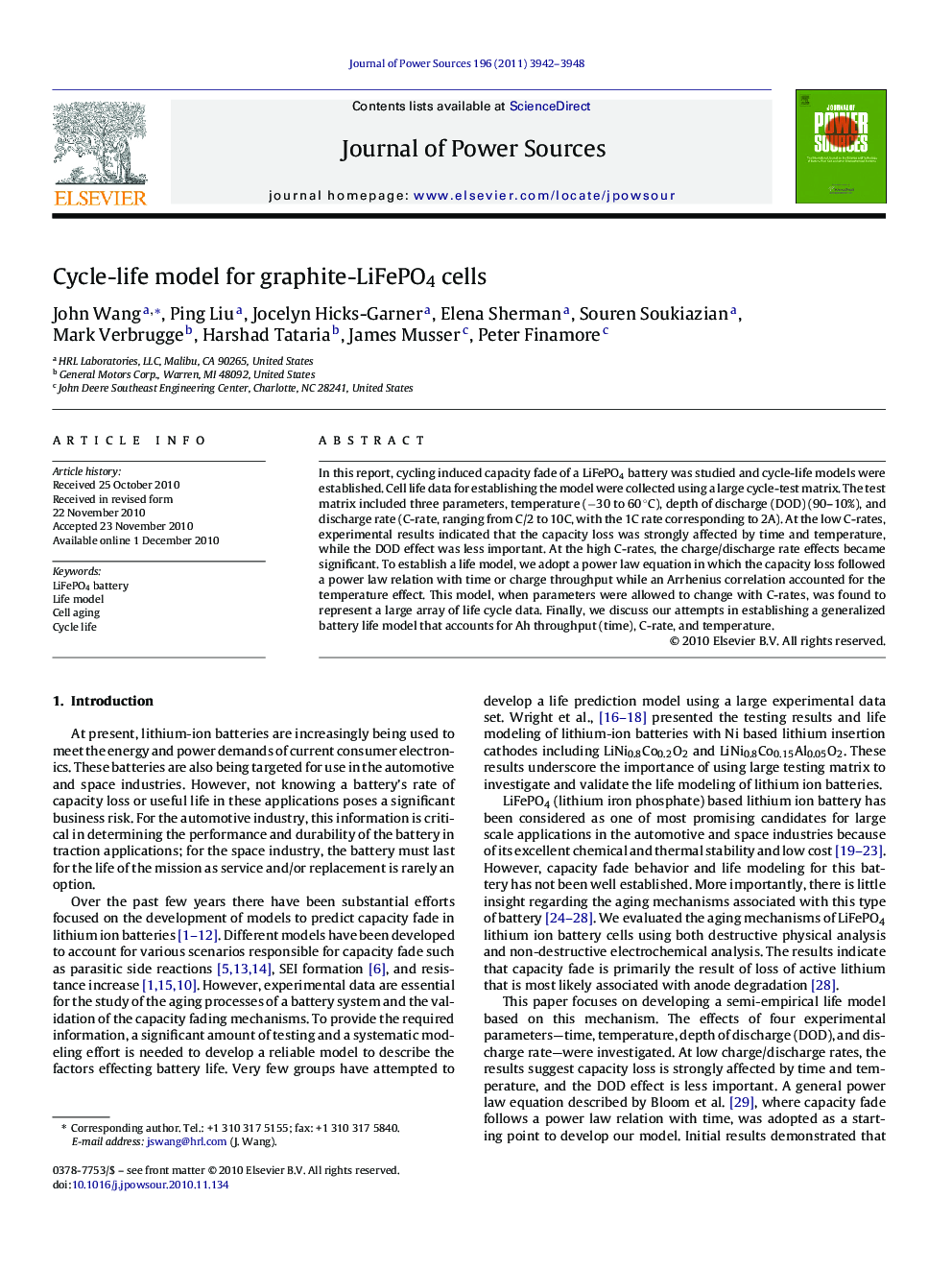| کد مقاله | کد نشریه | سال انتشار | مقاله انگلیسی | نسخه تمام متن |
|---|---|---|---|---|
| 1289266 | 973294 | 2011 | 7 صفحه PDF | دانلود رایگان |

In this report, cycling induced capacity fade of a LiFePO4 battery was studied and cycle-life models were established. Cell life data for establishing the model were collected using a large cycle-test matrix. The test matrix included three parameters, temperature (−30 to 60 °C), depth of discharge (DOD) (90–10%), and discharge rate (C-rate, ranging from C/2 to 10C, with the 1C rate corresponding to 2A). At the low C-rates, experimental results indicated that the capacity loss was strongly affected by time and temperature, while the DOD effect was less important. At the high C-rates, the charge/discharge rate effects became significant. To establish a life model, we adopt a power law equation in which the capacity loss followed a power law relation with time or charge throughput while an Arrhenius correlation accounted for the temperature effect. This model, when parameters were allowed to change with C-rates, was found to represent a large array of life cycle data. Finally, we discuss our attempts in establishing a generalized battery life model that accounts for Ah throughput (time), C-rate, and temperature.
Research highlights▶ Cycling induced capacity fade of a LiFePO4 battery was investigated and cycle-life models were established based on the cycling results from a large cycle-test matrix which included three important parameters, temperature (−30 to 60 °C), depth of discharge, DOD (90–10%), and discharge rate (C-rate, ranging from C/2 to 10C). ▶ The effects of test parameters (time, temperature, DOD, rate) were investigated and discussed. The results show that the capacity loss is strongly affected by time and temperature, while the effect of DOD is less important at a slow discharge rate, e.g., C/2. ▶ We demonstrated that capacity fade followed a power law relationship with charge throughput between 15 and 60 °C. We established a simple battery life model that accounts for Ah throughput (time), C-rates, and temperature and achieves qualitative agreement with experimental data. ▶ The model equations indicated that power law factors were valued very close to 0.5. This square-root of time dependence provides detailed insights of the capacity fading behaviors and further confirms the aging mechanisms that involve diffusion and parasitic reactions leading to loss of active lithium.
Journal: Journal of Power Sources - Volume 196, Issue 8, 15 April 2011, Pages 3942–3948